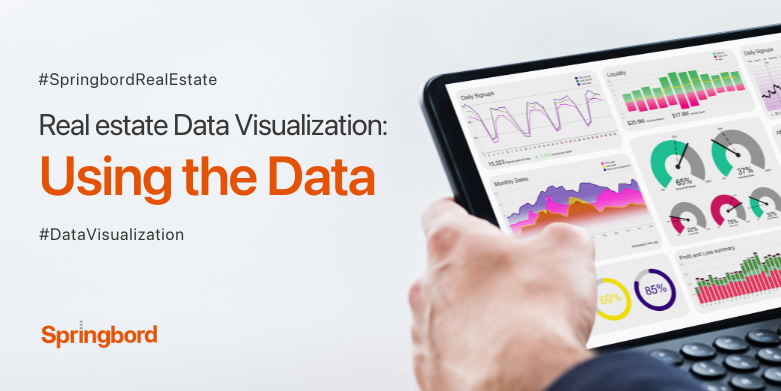 Read time 5 min
Read time 5 minIn today’s fast-paced world, the real estate market has become a vital barometer of economic health and a significant investment avenue. Real estate market analysis involves examining data and trends to gain insights into the current and future state of the industry. It provides valuable information to investors, homeowners, and professionals in the field, enabling them to make informed decisions. By analyzing key metrics such as home prices, inventory levels, mortgage rates, and demographic shifts, market analysts can paint a comprehensive picture of the real estate landscape and identify emerging opportunities and challenges.
II. Understanding Real Estate Market Analysis
A. Definition and Scope
Real estate market analysis is a crucial tool for business decision-making in the real estate industry. It involves evaluating various factors that influence the market, enabling businesses to make informed choices and develop effective strategies. The scope of real estate market analysis extends to residential, commercial, and industrial sectors, each with its unique dynamics and considerations.
B. Key Components of Market Analysis
- Economic Factors
Economic factors play a significant role in shaping the real estate market. Analyzing macroeconomic indicators provides valuable insights into the overall health and stability of the economy, allowing businesses to anticipate market trends. Key economic factors include GDP growth, inflation, and interest rates.
For instance, a high GDP growth rate signifies a robust economy, which often leads to increased demand for real estate. Inflation affects the purchasing power of consumers, impacting affordability and investment decisions. Interest rates, whether low or high, influence borrowing costs and can impact both residential and commercial real estate markets.
Businesses should interpret economic data in conjunction with other market indicators to forecast potential opportunities or risks. For example, a growing economy with low interest rates might indicate favorable conditions for property development and investment.
- Demographics and Population Trends
Demographic data provides valuable insights into market demand and preferences. Understanding the composition and characteristics of a population helps businesses identify target markets and tailor their offerings accordingly. Key demographic factors to consider include population growth, age distribution, and income levels.
For instance, an aging population might drive the demand for retirement communities or assisted living facilities. High-income levels in a particular area can suggest a market for luxury properties or upscale commercial spaces. By analyzing demographic trends, businesses can align their strategies with the evolving needs and preferences of the target audience.
- Supply and Demand Dynamics
The concept of supply and demand is fundamental to real estate market analysis. The balance between the availability of properties (supply) and the desire of buyers or tenants (demand) determines market conditions and influences prices. Analyzing supply and demand data helps businesses identify market imbalances and potential opportunities.
For instance, an oversupply of residential properties in a specific location may result in decreased prices and increased competition among sellers. On the other hand, a shortage of industrial spaces in a thriving business hub could create a demand-supply gap that presents opportunities for developers and investors.
By monitoring supply and demand dynamics, businesses can make informed decisions about property acquisition, development, pricing, and marketing strategies.
- Market Segmentation
Market segmentation is crucial in real estate market analysis as it allows businesses to target specific customer segments and tailor their offerings to meet their unique needs. Various criteria can be used for market segmentation, including property type, location, and customer segments.
For example, in the residential sector, market segmentation can involve distinguishing between single-family homes, condominiums, and apartments. Location-based segmentation may focus on urban versus suburban markets or specific neighborhoods within a city. Customer segments could include first-time homebuyers, retirees, or investors seeking rental properties.
By understanding the different segments within the real estate market, businesses can design targeted marketing campaigns, develop appropriate pricing strategies, and allocate resources effectively.
III. Key Metrics for Real Estate Market Analysis
A. Price and Value Analysis
Price and value analysis are essential for understanding market trends. Comparative market analysis and income approach are two commonly used methodologies for assessing property values. Comparative market analysis involves comparing similar properties in the market to determine a property’s fair value. The income approach assesses the value of a property based on its potential income generation, making it particularly relevant for commercial real estate.
B. Rental and Vacancy Rates
Rental rates and vacancy rates serve as crucial indicators of market health. Rental rates reflect the demand for properties and can provide insights into rental income potential. Vacancy rates, on the other hand, reveal the supply-demand balance. High vacancy rates may suggest oversupply, while low vacancy rates indicate high demand and potential rental income opportunities.
C. Sales and Transaction Data
Sales and transaction data offer valuable insights into market activity. By analyzing sales trends, businesses can identify emerging patterns, investment opportunities, and market cycles. Transaction data, such as the number of sales and average transaction values, provides a comprehensive overview of market activity and can help businesses make informed decisions.
D. Market Competitiveness Analysis
Market competitiveness analysis is crucial for strategic decision-making. Techniques such as market share analysis and SWOT analysis allow businesses to assess their position within the market, identify competitors, and understand market trends. By understanding their competitive advantages and disadvantages, businesses can devise effective strategies to differentiate themselves and capture market share.
IV. Current Trends in the Real Estate Market
A. Technological Advancements
Technology is revolutionizing the real estate industry. Proptech, which encompasses various technologies such as artificial intelligence, virtual reality, and blockchain, is reshaping the way properties are bought, sold, and managed. Smart buildings equipped with IoT devices and automation systems offer improved energy efficiency, security, and tenant experiences. Virtual reality enables virtual property tours, enhancing the buying and renting process.
B. Sustainability and Green Initiatives
Sustainability has become a significant consideration in the real estate market. Green building certifications, such as LEED and BREEAM, are gaining prominence, as environmentally conscious consumers prioritize energy-efficient and eco-friendly properties. Businesses that embrace sustainability can attract environmentally conscious tenants or buyers, reduce operating costs through energy savings, and enhance their brand reputation.
C. Shifts in Consumer Preferences
Consumer preferences in the real estate market are constantly evolving. Trends such as remote work, urbanization, and the sharing economy impact property demands. The rise of remote work has led to increased interest in properties with home office spaces or flexible layouts. Urbanization trends have created demand for mixed-use developments that combine residential, commercial, and recreational spaces. Additionally, the sharing economy has given rise to short-term rental platforms, impacting the demand for investment properties.
Conclusion:
As the real estate market continues to evolve, keeping a close eye on the key metrics and trends is essential for anyone involved in the industry. Market analysis empowers buyers, sellers, and investors to navigate the complexities of the market, optimize their strategies, and seize opportunities. By understanding the dynamics of supply and demand, interest rates, and demographic patterns, stakeholders can make well-informed decisions that align with their objectives. In this ever-changing environment, real estate market analysis serves as an indispensable tool for success, enabling individuals and companies to thrive in the dynamic world of real estate.







